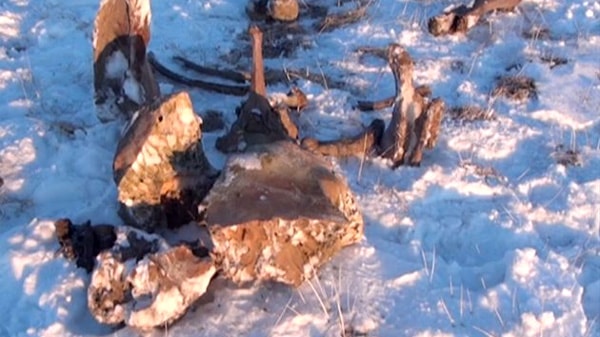Russia finds fresh mammoth carcass
This discovery is raising hopes of cloning this Ice Age animal.
A perfectly preserved woolly mammoth carcass with fresh flesh and still flowing blood has been found on a remote Arctic island, Russian scientists said on May 30, raising hopes of cloning the Ice Age animal.
 |
| The remains of a mammoth have just been found by Russian scientists (Photo: AP/Rossiya) |
“The reason the mammoth carcass is in such good condition is because it was trapped and preserved in a block of pure ice,” said Semyon Grigoryev, director of the Mammoth Museum, who led the expedition of Russian scientists to the Lyakhovsky Islands, off the coast of Siberia.
"A quantity of dark blood was found in the mammoth's abdominal cavity. When we broke the ice layers in the mammoth's abdomen, blood flowed out," Grigoryev said in a statement released by the Northeastern Federal University in Yakutsk.
The woolly mammoth is thought to have become extinct about 10,000 years ago, although scientists still think that small groups of mammoths may have lived longer in Alaska and on islands off the coast of Siberia.
Scientists have so far decoded much of the woolly mammoth's genetic code from its head hairs. Some scientists believe it could be possible to clone the species if its living cells are found.
The temperature at the time of excavation of the mammoth carcass was between minus 7 and minus 10 degrees Celsius.
Researchers collected blood samples from the mammoth and sent them to Yakutsk to test for bacteria and dangerous infections.
The muscle tissue of this mammoth carcass was also in perfect condition. "The pieces of muscle tissue we found had the natural red color of fresh meat," said Mr. Grigoryev.
Measuring up to 4 meters tall and weighing around 10 tons, mammoths were giant animals that roamed the vast lands between the UK and North America. So far, the cause of the mammoth's extinction is believed to be due to humans and climate change./.
According to VOV - VT


